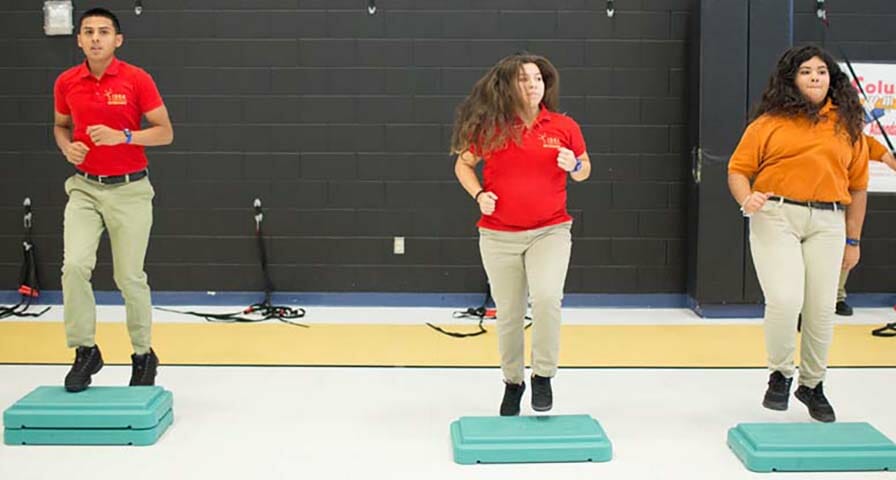IDEA Public Schools Help Students Improve Academically by Maintaining Commitment to Physical Fitness as Complement to Classroom Learning
Teachers and administrators at IDEA Public Schools use PE heart rate training as an essential tool in helping students improve their academic performance.
Throughout IDEA’s network, students manage their physical fitness by wearing IHT Zone wrist heart rate monitors. By analyzing that data collected through the heart rate monitors and analyzed with the IHT Spirit System software throughout the year, PE Curriculum Manager Eren Kirskey and IDEA’s PE teachers see students improve in key metrics. Principals and classroom teachers have noticed as well. At several IDEA campuses, leadership has changed its approach to addressing academic interventions for students struggling academically.
“We can see that the kids are focusing better when they come back into the classroom,” Kirksey said.
After analyzing data collected during physical education classes, principals at several IDEA campuses now require students in need of academic intervention to first go through a 30-minute exercise session. PE teachers guide the students through the workout, ensuring they make the most of their time before tutoring.
PE Heart Rate Lessons Prep Students for Academic Interventions
“We used to pull kids from PE for academic interventions,” Kirksey explained. “The principal had a meeting with his staff and told them that these [Zone] monitors are going to help kids get smarter in the classroom. The students will be earning the use of the monitors. ‘You will no longer take kids out of PE for academic intervention until they have had at least 30 minutes in PE utilizing the monitors.’”
PE teachers understand the value that exercise has on academic readiness. At another campus, the PE teachers approached the principal and asked to provide students with activity breaks during academic interventions, some of which have students in classrooms for several hours. During the break, students must get enough exercise to get their heart rates up into moderate or vigorous levels as indicated by the color on their heart rate monitors: yellow for moderate activity; red for vigorous.
“It won’t be that they are simply getting away from the books for that time,” Kirksey explained. “[Students] will check themselves in, get their monitors and then teachers look where they are at three-minute intervals. If anyone is in the blue, then we will do a quick two-minute heart rate workout. We want them to enjoy their play, but they must play with a purpose.”
Students see Benefits of Heart Rate Monitors Through Learning Readiness
The activity breaks help students refocus and make the most of the remaining time working to catch up on their academics. The policy builds on the Naperville (Ill.) Central High School study in which teachers Paul Zientarski and Phil Lawler discovered that students who went through a heart rate-focused PE lesson immediately prior to tests in difficult classes achieved higher test scores.
Zientarski and Lawler built an award-winning Learning Readiness PE curriculum around their findings, which were also published as part of a report by Active Living Research.
“Studies have shown that the more active you are, the smarter you’re going to be in the classroom,” said IDEA PE teacher Jermaine Brown, one of the teachers that uses the Spirit System to analyze student heart rate data. “This data will help us get the scholars where they need to be.”


